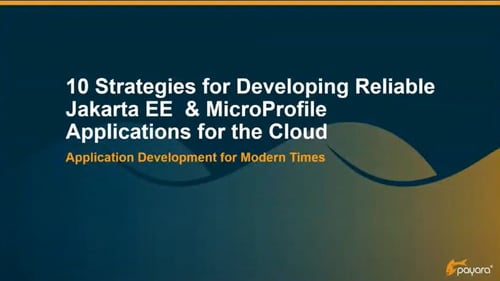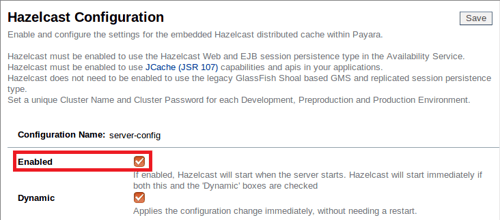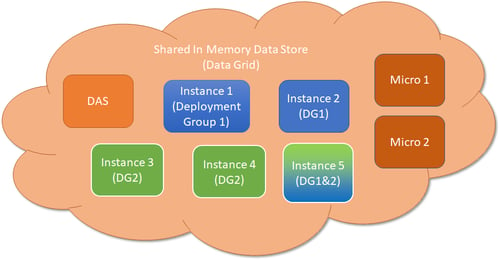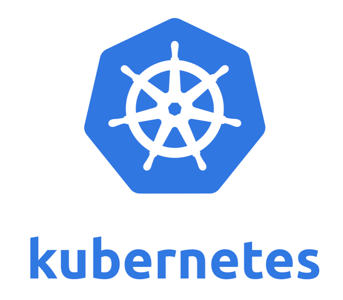Posts tagged Clustering
Using Hazelcast SQL with Payara Micro
Published on 27 Sep 2021
by Rudy De Busscher
Topics:
Payara Micro,
Hazelcast,
Clustering,
domain data grid
|
0 Comments
Co Authored with Nicolas Frankel (Hazelcast Developer Advocate), this article is also available as a PDF.
The Hazelcast In-Memory Data Grid (IMDG) is an efficient method of storing data in a distributed way within the memory of the different processes of the cluster. Because it is distributed, searching the data locally requires 'moving' the data to your instance so it can be accessed, which is not overly efficient. Hazelcast SQL allows distributed queries which perform the search where the data is, and then transfers only the results to your process. Since the Payara products already use Hazelcast IMDG, using the Hazelcast SQL capabilities is straightforward: just add the additional JAR library to start using it.
Deploying to Payara Deployment Group Using the Maven Cargo Plugin
Published on 12 Mar 2021
by Rudy De Busscher
Topics:
Clustering,
Payara Server 5,
deployment group
|
2 Comments
Introduction
The Apache Maven Cargo Plugin allows you to deploy your application to a Payara Server, running locally or remotely. Using Maven as a build tool is an easy way to immediately deploy the application during the build to a test or production server.
We have created a custom version of the Cargo Plugin which also supports the Deployment Group feature of the Payara Server.
How to Improve Domain Data Grid Performance
Published on 26 Jan 2021
by Fabio Turizo
Topics:
Microservices,
Clustering,
How-to,
Payara tools
|
0 Comments
One of the cornerstones of any modern Payara Platform architecture is the use of the Domain Data Grid. The Domain Data Grid allows multiple Payara Server or Payara Micro instances to join and form a robust cluster of interchangeable nodes that can share data between each other and grant High Availability and Failover capabilities to any applications deployed in the cluster.
10 Strategies for Developing Reliable Jakarta EE Applications for the Cloud
Published on 27 Nov 2020
by Fabio Turizo
Topics:
Java EE,
Microservices,
Clustering,
Scalability,
Cloud,
Monitoring,
Cloud-native,
JakartaEE,
Payara Platform
|
0 Comments
What happens when an application designed for a small user base needs to be scaled up and moved to the cloud?
It needs to live in a distributed environment: responding to an appropriate number of concurrent user requests per second and ensuring users find the application reliable.
Though Jakarta EE and Eclipse MicroProfile can help with reliable clustering, there is no standard API in Jakarta EE that defines how clustering should work currently. This might change in the future, but in the meantime, this gap must be filled by DevOps engineers.
In this blog, we will cover 10 technical strategies to deal with clustering challenges when developing Jakarta EE and MicroProfile for cloud environments.
Did You Know? Payara Platform Can Cluster By DNS
Published on 17 Dec 2018
by Jonathan Coustick
Topics:
Hazelcast,
Clustering,
Payara Platform
|
2 Comments
Creating a Simple Deployment Group
Published on 24 Aug 2018
by Matthew Gill
Topics:
Hazelcast,
Clustering,
Payara Server Basics - Series,
Payara Server 5 Basics
|
5 Comments
Note: This blog post is an update to Creating a Simple Cluster, which was written for Payara Server 4.
Introduction
Continuing our introductory blog series, this blog will demonstrate how to set up a simple Hazelcast deployment group containing two instances. Deployment groups were introduced with Payara 5 to replace clusters. They provide a looser way of managing servers, allowing instances to cluster by sharing the same configuration whilst providing a single deployment target for all of them. See here to read more about Deployment Groups.
Setting Up Cache JPA Coordination with the Payara Platform using EclipseLink and JMS/Hazelcast
Published on 21 Jun 2018
by Lenny Primak
Topics:
JMS,
Hazelcast,
Clustering,
Eclipse
|
6 Comments
When it comes to clustering and distributed computing performance, some of the challenges you have to overcome involve cache invalidation and coordination. Fortunately, both Payara Server and Payara Micro come with EclipseLink, which supports cache coordination and invalidation out of the box. This blog will explain how to configure this feature for your Payara Data Grid. We would also like to thank Sven Diedrichsen who is the community member that created the Hazelcast cache coordination.
Fundamentos de Payara Server Parte 6 - Creando un cluster dinámico con conmutación por fallas en Payara Server con Hazelcast
Published on 29 May 2018
by Michael Ranaldo
Topics:
Hazelcast,
Payara Server Basics,
Clustering,
How-to,
GlassFish basics,
JVM,
Apache,
Payara Server Basics - Series,
Developer,
Spanish language
|
1 Comment
Avanzando más nuestra serie de blogs de introducción, esta entrada mostrará como puedes escalar de forma dinámica tu cluster, y como Payara Server maneja la conmutación por fallas entre miembros del cluster.
See here for the original version in English language.
La conmutación por fallas es la habilidad de continuar proporcionando acceso a nuestro sitio web o aplicación en el caso de que un servidor falle. Es una parte importante de un servicio que goza de alta disponibilidad, cuyo objetivo es minimizar los tiempos de inactividad a lo largo de tu infraestructura de servicios.
Domain Data Grid in Payara Server 5
Published on 23 Jan 2018
by Steve Millidge
Topics:
Microservices,
Hazelcast,
Clustering,
Scalability,
Cloud,
Amazon Cloud,
Cloud Connectors,
Payara Server 5,
Cloud-native,
domain data grid
|
0 Comments
In Payara Server 5 we will be introducing some major changes to the way clustering is working by creating the Domain Data Grid (see documentation for more info). The Domain Data Grid will be easier to use, more scalable, more flexible and ideally suited for cloud environments and cloud-native architectures. All Payara Server instances will join a single domain-wide data grid for sharing of in-memory data like web sessions, JCache, SSO and Stateful EJBs.
Kubernetes Native Discovery with Payara Micro
Published on 20 Dec 2017
by Susan Rai
Topics:
Payara Micro,
Microservices,
Hazelcast,
Clustering,
Cloud,
Kubernetes
|
1 Comment
Payara Micro supports Hazelcast out of the box, and can be used for clustering. This allows members in the cluster to distribute data between themselves, amongst other things. By default, Hazelcast comes with multiple ways to discover other members in the same network. A multicast discovery strategy is commonly used for this purpose; a multicast request is sent to all members in a network and the members respond with their IP addresses. Another strategy must be employed if a member cannot or does not wish to provide their IP address.










